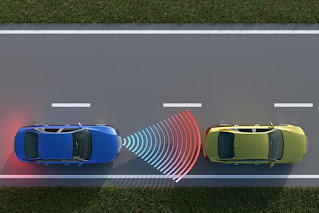The future of driving is here, and it comes with a feature that's changing the way we experience our journeys - Adaptive Cruise Control (ACC). Part of the Advanced Driver Assistance Systems (ADAS) family, ACC is revolutionizing the driving experience, enhancing both safety and convenience. In this comprehensive blog, we'll delve into the world of Adaptive Cruise Control, exploring its functions, benefits, and how it's reshaping the way we travel.
Uncovering Adaptive Cruise Control
The Basics of ACC:
- Adaptive Cruise Control is an advanced system designed to maintain a safe and consistent following distance behind the vehicle ahead.
- Unlike traditional cruise control, ACC can automatically adjust the vehicle's speed to match the flow of traffic.
Sensors and Radar Technology:
- ACC relies on a combination of sensors, radar, and sometimes cameras.
- These sensors continuously monitor the road and traffic ahead, feeding real-time data to the system.
How ACC Works
Setting a Preferred Speed:
- The driver can set a preferred cruising speed, just like traditional cruise control.
- ACC ensures the vehicle maintains this speed when the road is clear.
Maintaining Safe Following Distance:
- ACC continuously assesses the distance to the vehicle ahead.
- If the gap narrows, the system can reduce speed by automatically applying the brakes or downshifting.
Dynamic Adjustments:
- ACC can adapt to various traffic conditions, including stop-and-go traffic.
- It can bring the vehicle to a complete stop when necessary and resume acceleration when traffic begins moving again.
Benefits of Adaptive Cruise Control
Enhanced Safety:
- ACC helps reduce the risk of rear-end collisions by maintaining a safe following distance.
- It can react more quickly than a human driver to sudden changes in traffic.
Reduced Driver Fatigue:
- Long highway drives become less tiring with ACC, as it handles speed adjustments and reduces the need for constant pedal input.
Improved Fuel Efficiency:
- By optimizing speed and reducing abrupt acceleration and braking, ACC can improve fuel economy.
Real-World Impact
Adaptive Cruise Control is already making a significant impact on the roads. It's not just a luxury feature; it's a safety tool that's increasingly becoming standard in modern vehicles. As technology continues to advance, we can expect even more sophisticated ACC systems that further enhance our driving experiences.
Conclusion: The Future of Cruising
Adaptive Cruise Control in ADAS is transforming our highways and byways into safer, more comfortable routes. It's a testament to the ongoing commitment to redefining the driving experience, one vehicle at a time. With ACC as our co-pilot, we can look forward to a future where long drives are less taxing, and road safety is taken to new heights.
In summary, Adaptive Cruise Control is more than just a convenience; it's a leap forward in road safety and driving comfort. As technology continues to evolve, ACC will remain a pivotal component of the ever-advancing world of ADAS.
Our detailed guide about ADAS Systems starts here.













0 Comments
If you have any doubts, please let me know in comments.